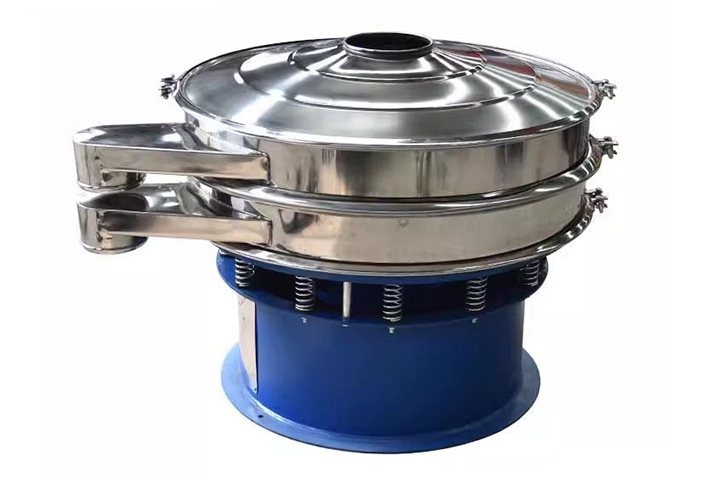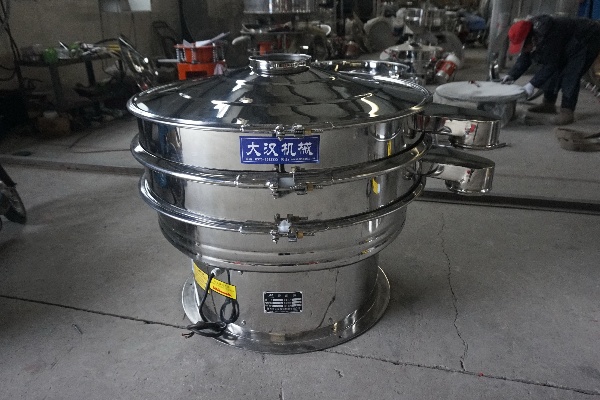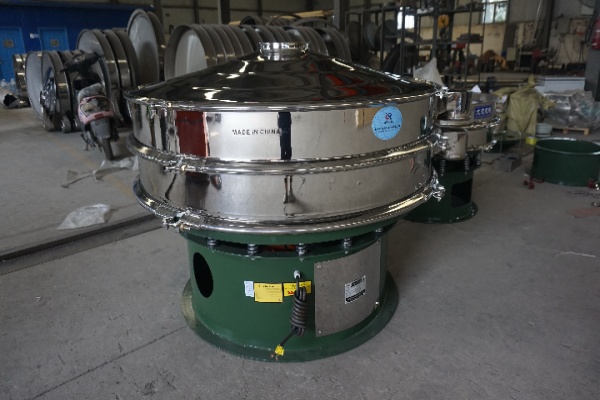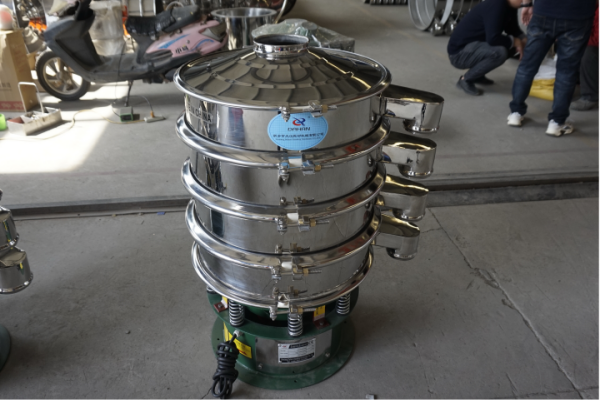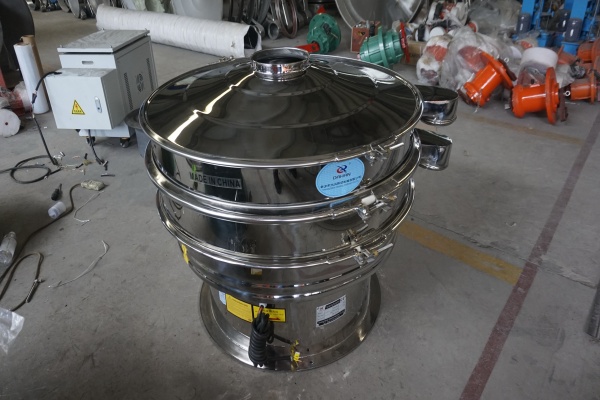
Whey Powder Vibratory Sifter
Whey Powder Vibratory Sifter is mainly used for screening, grading and impurity removal of whey powder, while featuring high screening efficiency, precise classification, hygienic safety and strong flexibility. Its price usually ranges from $600to $4800/Set.
Function:Customization, Filtration \ Grading \ Screening
Screen Mesh:2-500 Mesh
Capacity:100Kg-10Tons/hour
layer:1-5 layers
Application material:Powder \ Granular \ Liquid
Material: Stainless Steel 304/316L
What is a whey powder vibratory sifter?
The whey powder vibratory sifter is a sieving device designed for whey powder screening, grading and impurity removal. It integrates high-frequency vibration technology, precision screening and automatic discharging functions to achieve efficient and clean processing of whey powder. The equipment adopts a stainless steel structure (304 or 316 stainless steel), which meets food-grade and pharmaceutical-grade hygiene standards to avoid material contamination. It can effectively solve the problems of agglomeration, uneven particle size, and impurity mixing in whey powder processing, and ensure stable product quality.
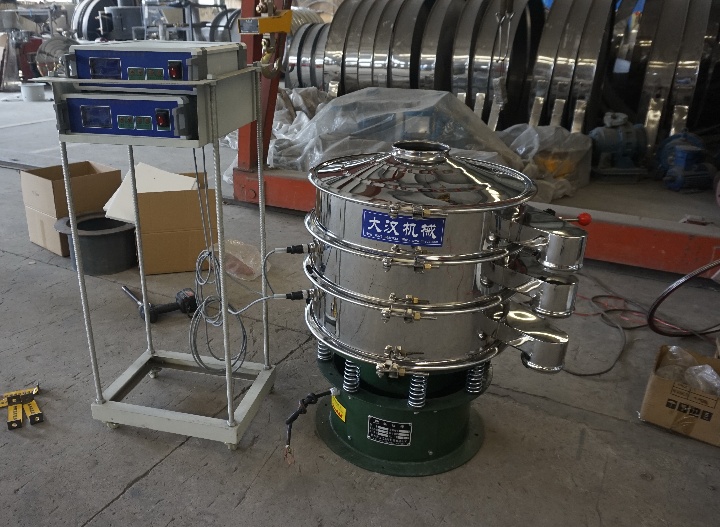
As a key equipment in the dairy processing, food production and pharmaceutical industries, its price range is wide, generally between US$600 and US$5,000. The specific price is affected by many factors such as equipment specifications, screening accuracy, and automation level. It can meet the procurement needs of enterprises of different sizes. Whether it is a small workshop or a large production base, you can find a suitable model.
How to classify whey powder vibratory sifters?

According to functional characteristics, application scenarios and technical features, whey powder vibrating screens can be divided into the following categories, including ultrasonic vibrating screens, airflow screening machines, and swing screens.
Ultrasonic vibrating screen: On the basis of the vibrating screen, an ultrasonic module is added to solve the problem of fine powder clogging through ultrasound. The multi-layer screen (2-5 layers) can achieve accurate classification of coarse powder, medium powder and fine powder. The number of screen meshes is adjustable (20-600 meshes), which meets the different precision requirements of baby food, pharmaceutical excipients, etc., and is suitable for medium and large whey powder processing plants.
Airflow screening machine: If whey powder needs to be ultra-finely graded (more than 300 meshes, such as whey protein peptide powder), the airflow screening machine is a supplementary choice. It uses centrifugal force and airflow force to achieve screening, avoids whey powder agglomeration due to extrusion, and is suitable for ultra-fine grading of medical-grade whey powder (such as 300-500 meshes), but the processing capacity is low (100-500kg/h), which is suitable for small batches and high-precision scenarios.
Swinging screen: If the whey powder only needs coarse classification (20-80 mesh, such as industrial whey powder pretreatment), you can choose a swinging screen. It uses artificial screening action, gentle screening, and reduces powder breakage; but the anti-blocking ability is weak, and the screen needs to be cleaned manually (once every 4-6 hours), which is suitable for scenes with low precision requirements.
What are the advantages of whey powder vibrating screen?
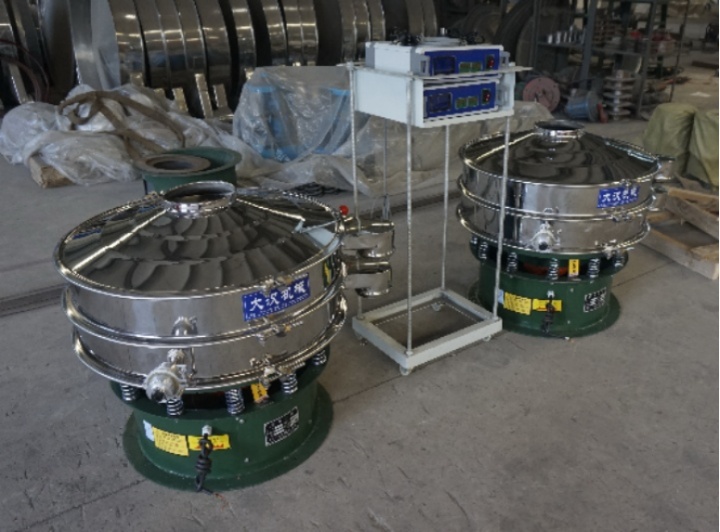
Compared with traditional manual screening or ordinary vibrating screens, whey powder vibrating screens have significant advantages: high screening efficiency, high-frequency vibration (up to 2,500 times/minute) to ensure that the whey powder is fully dispersed and screened, and the single pass rate exceeds 98%, which is 5-8 times the efficiency of manual screening; accurate classification, multi-layer screen design with adjustable mesh (40-200 mesh), can accurately separate whey powder into different particle size ranges, meeting the quality requirements of baby food, sports nutrition products, etc.; hygienic and safe, all parts in contact with the material are made of 304/316 stainless steel, with a smooth surface and easy to clean. The fully sealed structure prevents cross contamination and complies with FDA and GMP standards. It is highly flexible and can adapt to whey powder in different states (such as dry powder, semi-wet powder) by adjusting the vibration parameters. It also supports fast screen change (completed within 10 minutes) to meet diversified production needs.
Technical Parameters of Whey Powder Vibratory Sifter
| Model | Diameter (mm) | Screening area (m²) | Screen size (mesh) | Layers | Input power (V/HZ) | Ultrasound (model) | Transducer (location) | Frequency (KHz) | Ultrasound (gear) | Power (Kw) |
| DHC-400 | ⌀340 | 0.09 | 60-635 | 1-3 |
Sieving machine: 380/50 Ultrasonic sieving machine: 220/50 |
400 | Built-in/External | 38KHz |
Continuous 1-9 gears Pulse 2 gear |
0.25 |
| DHC-600 | ⌀540 | 0.23 | 60-635 | 1-3 |
Sieving machine: 380/50 Ultrasonic sieving machine: 220/50 |
600 | Built-in/External | 38KHz |
Continuous 1-9 gears Pulse 2 gear |
0.55 |
| DHC-800 | ⌀730 | 0.42 | 60-635 | 1-3 |
Sieving machine: 380/50 Ultrasonic sieving machine: 220/50 |
800 | Built-in/External | 38KHz |
Continuous 1-9 gears Pulse 2 gear |
0.75 |
| DHC-1000 | ⌀900 | 0.64 | 60-635 | 1-3 |
Sieving machine: 380/50 Ultrasonic sieving machine: 220/50 |
1000 | Built-in/External | 38KHz |
Continuous 1-9 gears Pulse 2 gear |
1.1 |
| DHC-1200 | ⌀1100 | 0.95 | 60-635 | 1-3 |
Sieving machine: 380/50 Ultrasonic sieving machine: 220/50 |
1200 | Built-in/External | 38KHz |
Continuous 1-9 gears Pulse 2 gear |
1.5 |
| DHC-1500 | ⌀1400 | 1.54 | 60-635 | 1-3 |
Sieving machine: 380/50 Ultrasonic sieving machine: 220/50 |
1500 | Built-in/External | 38KHz |
Continuous 1-9 gears Pulse 2 gear |
2.2 |
| DHC-1800 | ⌀1700 | 2.27 | 60-635 | 1-3 |
Sieving machine: 380/50 Ultrasonic sieving machine: 220/50 |
1800 | Built-in/External | 38KHz |
Continuous 1-9 gears Pulse 2 gear |
3 |
What is the working principle of the whey powder vibratory sifter?
The whey powder vibratory sifter completes the screening process through the coordinated operation of multiple systems. The core is based on the principle of vibration mechanics and material separation. The equipment is powered by a vibrating motor (mostly a double-axis eccentric block motor). When the motor is running, the eccentric blocks at both ends generate centrifugal force to form high-frequency linear or three-dimensional vibration. Whey powder enters the screen surface through the feed inlet, and under the action of vibration, it throws or slides along the screen surface to achieve uniform dispersion of the material. Due to the different sizes of whey powder particles, small particles can fall into the lower layer through the pores of the screen, and large particles or impurities flow along the screen surface to the discharge port to complete the initial separation.
What are the applications of whey powder vibratory sifter?
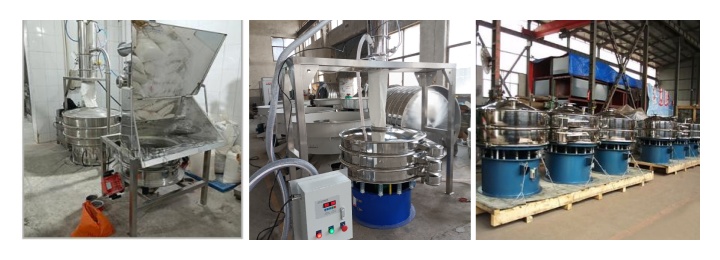
Whey powder vibrating screen is widely used in scenarios where powdered materials need to be finely screened. In the field of food processing, it is used for screening whey protein powder, milk powder, skimmed milk powder and dairy additives; in the pharmaceutical industry, it is used for the purification of whey-based nutritional supplements and pharmaceutical excipients; in the production of feed, it is used for the classification of whey powder in animal feed to improve the absorption rate; in the cosmetics industry, it is used for the screening of whey powder in skin care raw materials.
Whey powder vibrating screen is a screening equipment designed for the characteristics of whey powder. Through high-frequency vibration and precise grading technology, it effectively solves its problems such as agglomeration and impurity mixing. It is suitable for different production capacities and scenarios, relying on the principle of vibration mechanics to achieve efficient screening, and has the advantages of high pass rate, precise grading, hygiene and safety. It is widely used in food, medicine, feed and other fields, providing stable guarantee for whey powder processing, meeting the diversified needs of small workshops to large enterprises, and is a key equipment for improving product quality and production efficiency.
